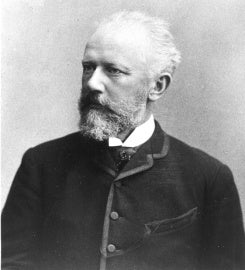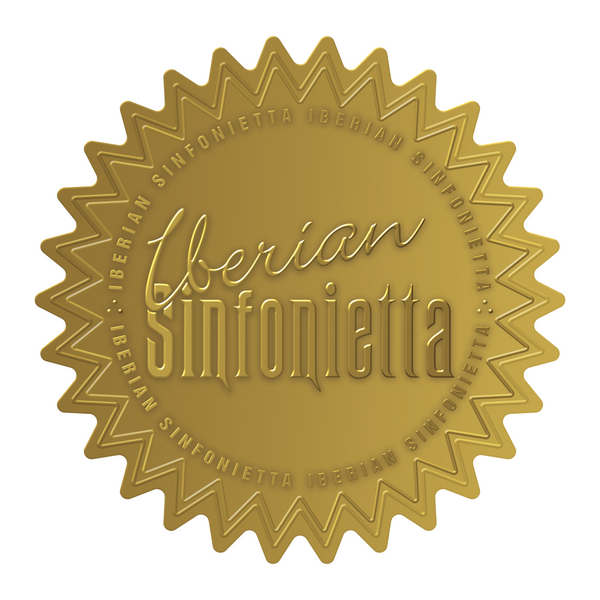
THE SERENADE FOR STRINGS, ONE OF TCHAIKOVSKY'S LOVES
Dear public,
We write this new entry in order to explain our next appointment on Saturday, March 19 at 7:00 p.m. at the Peace Palace in Fuengirola . Since the last entry we wrote, things have changed, in fact right now, as a result of a Russian invasion of Ukraine, we know that on European soil there is a bloody war like all the others, which will surely rethink the medium and long term way of relating to countries that do not respect legitimate democracies like the Ukrainian one. To this, neither our country, nor Europe nor the entire world have their backs, but once this has been clearly stated, we would like, once again, but now with more resoundingness if possible, to raise the flag of culture as an antidote to these barbarities. Hence, our entry today, about a great Russian, Tchaikovsky , serves as an example of solidarity with so many Russians who will never be supporters of what is happening.

The year 1880 is very important for Tchaikovsky , in it he wrote one of his works that has brought him the most fame throughout the world since that same year, the 1812 Overture, which precisely commemorated the victory of the resistance, in this case Russian, in that year before the advance of Napoleon Bonaparte on Russian soil. Paradoxical, right?
The other great work that Tchaikovsky created that year is precisely the gem that our Iberian Sinfonietta will perform on Saturday, March 19, the “Serenade for Strings.” It is a work for which the composer always felt a special predilection, he said: “I wrote it out of internal compulsion. This is a work of heart, and that is why I dare to hope that this work does not lack artistic qualities."

The Serenade premiered in a private concert at the Moscow Conservatory on December 3, 1880, and its first public performance was in Saint Petersburg on October 30, 1881, conducted by Eduard Napravnik. It was his publisher who had asked him for a new Symphony, as he saw that the public was demanding it, and to his surprise, the composer sent him a “Serenade”, and a timely explanation, as Tchaikovsky told him in a letter, referring to his Serenata for Strings: “I don't know if it's because it's the youngest of my children or because it's really not that bad, but I truly am in love with my Serenata.” In another letter, this time to his patron, the woman who with her financial contribution allowed Tchaikovsky to cultivate his art: “I wish with all my heart that you can hear the Serenade correctly performed… and I believe that the central movement, played by the violins , you will gain your understanding.”
The Serenade, as we see, is very special for Tchaikovsky , there are several powerful reasons, one is that its first movement, of the four in the Serenade, is dedicated to Mozart, the idol of his entire life. Tchaikovsky was a scholar of Mozart's work, he knew and valued it from beginning to end, and in this Serenade he makes a movement absolutely imitating his style, as a tribute. He will also do so in other works such as his Suite No. 4 “Mozartiana” or in his Rococo Variations for Violoncello. “The first movement is my homage to Mozart,” Tchaikovsky wrote. “It is intended to be an imitation of his style, and I would be delighted if I thought I had come in any way close to my model,” he wrote.

The second movement, the Waltz, is in itself a work with so much personality and elegance that it is often performed independently; on this occasion, Iberian Sinfonietta will do so in its original context, within the entire Serenade. In this exquisite work, Tchaikovsky recreates more of his own Waltzes than the historical ones of the Austrian Masters.
The third movement is an Elegy, and remember, an Elegy is a “Poetic composition of the lyrical genre in which the death of a person or other misfortune is lamented and that does not have a fixed metric form.” It opens with a choral passage, then the arpeggiated pizzicatos appear on the low strings especially.
Finally, the fourth movement, Finale (Tema Russo), opens with an Andante introduction based on a Russian folk melody, a "drag song" from the Volga. Both the main theme of the A llegro con spirito , based on the form of the opening chorus of the Serenade, and the chorus itself, which is the final gesture of the movement, provide a sense of unity that encompasses the entire work. Not to miss it.
Jorge Rodríguez Morata
Pedagogical content coordinator
